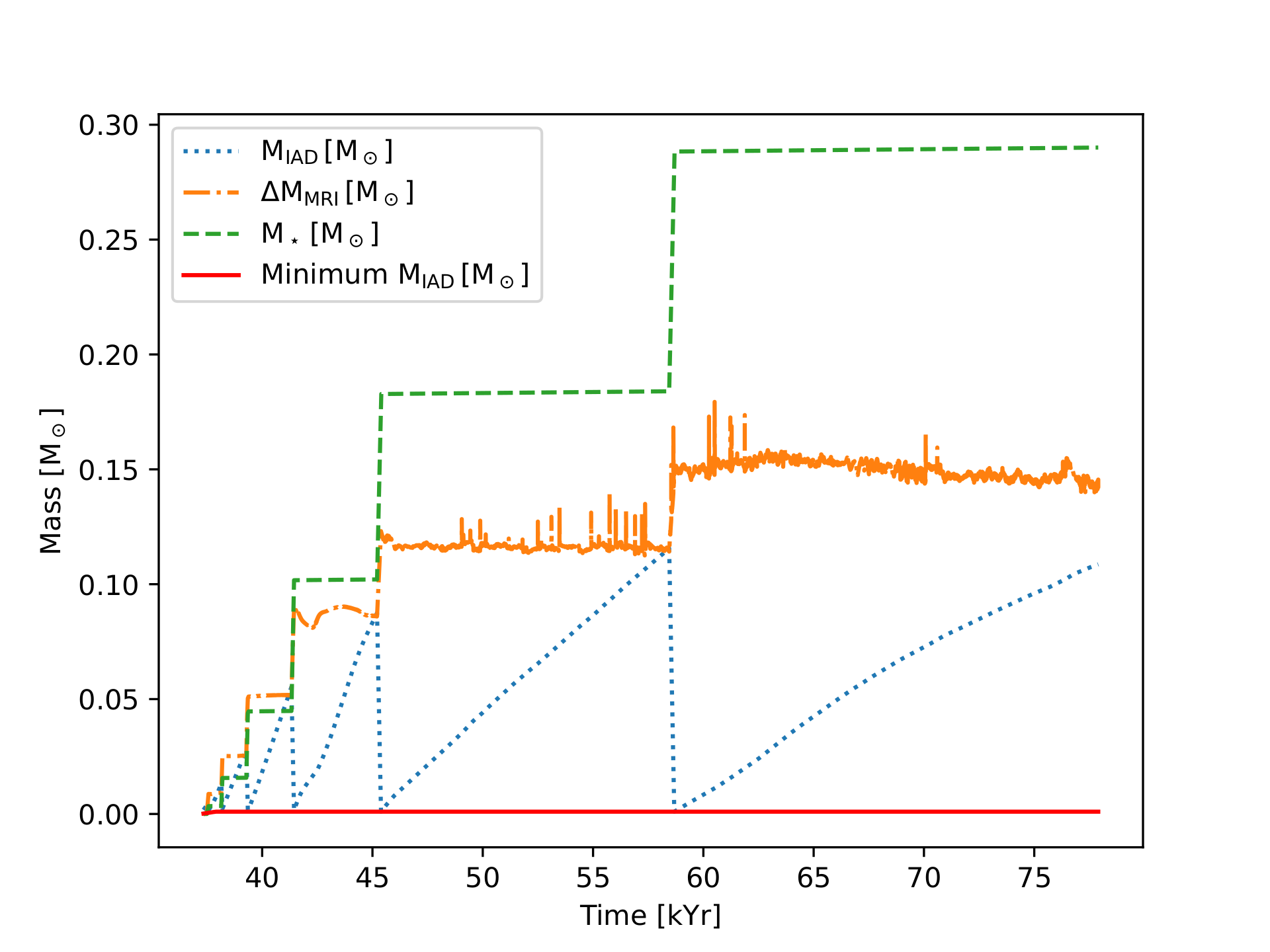Episodic Accretion onto Low Mass Protostars
Author: Christian Riesop
As described in the March highlight, feedback from protostars contributes to the dynamics of the evolution of the InterStellar Medium (ISM). The strength of that feedback is approximately proportional to the rate with which a protostar accretes mass from its protostellar disc. Thus we want to model the dynamics of accretion onto protostars in our simulations of the ISM.
When a Molecular Cloud (MC) becomes unstable and collapses most of its mass can not fall directly onto the forming protostar due to angular momentum. Instead most of its mass forms a protostellar disc, a nearly continuous disc of gas and dust with a Keplarian velocity profile surrounding the protostar. As the velocity decreases with increasing radius, viscosity causes mass to be slowly transported inwards while angular momentum is transported outwards. Thereby some mass is continuously accreted onto the protostar. Simultaneously new mass from the MC continues to steadily fall in and is added to the outer parts of the disc. However this slow and steady stream of accretion can be disturbed by outside factors or when the disc itself becomes unstable, leading to short periods of drastically increased, episodic accretion.
In detailed simulations of protostellar discs Zhu et al. (2010) found that the inner part of the disc becomes unstable if too much mass builds up in this region. In this case the optical density of the disc becomes too great and it insulates itself to the point that viscous heating causes the temperature in the disc to exceed 1500 K. At this point, as the conductivity of the material increases with the temperature, magnetic braking becomes strong enough to disrupt the disc, which leads to further heating, which leads to further magnetic braking, which ultimately leads to the entire inner part of the accretion disc being rapidly accreted onto the protostar. From this Stamatellos et al. (2011) proposed a simple sub-grid model for episodic accretion in astrophysical simulations which I have implemented in our simulation code FLASH.
Since most simulations lack the necessary resolution to form stars self consistently, we create Star-Particles (also called Sink-Particles) whenever the density in the simulation becomes too great. These particles can move freely through the domain of the simulation and absorb mass from their surroundings. I have extended these Star-Particles with an additional set of variables for the inner accretion disc. Now whenever mass is absorbed by the particle it is first added to this disc. It is then slowly accreted onto the protostar at a constant rate. However if the mass of that disc exceeds a certain threshold, based on the mass of the protostar and the rate of infall onto the disc, an episodic accretion event is triggered during which mass is accreted 5000 times faster. This lasts until all available mass in the inner accretion disc is exhausted.

